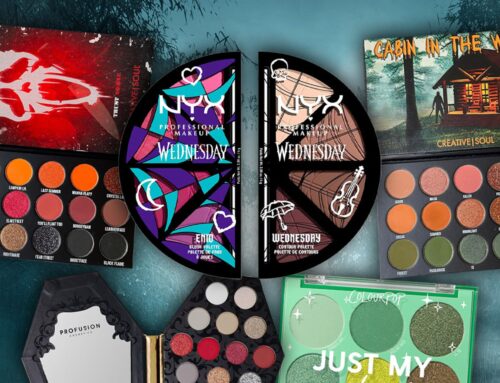Meta Just Got Some Powerful New Competition for AI-Enhanced Wearables @themotleyfool #stoc
October 12, 2025
Here’s why its dominance in this niche might come to an abrupt end.
Meta Platforms (META -3.83%) is the king of virtual reality (VR) right now.
Between its Quest VR headset and its new line of Ray-Ban artificial intelligence (AI) glasses, Meta’s wearables not only dominate the market — in some cases, they are the market.
But last week, a new report emerged that Apple (AAPL -3.40%) might be planning to bring Meta’s dominance in wearables to an end. Here’s why this could be very bad for Meta.
Headsets are so 2023
The Meta Quest (formerly Oculus Quest) line of headsets is by far the top-selling VR headset, and it’s not even close. The Quest dominates with 77% of market share. Its nearest competitors, Sony‘s PlayStation VR, Apple’s Vision Pro, and Chinese entrant PICO, each have market shares in the single digits.
In spite of Meta’s headset dominance, though, the Reality Labs unit — which makes the Quest — has been losing money as Meta pours resources into it as part of its long-term vision for building a metaverse. In the company’s most recent quarter, Reality Labs brought in just $370 million in revenue (0.8% of Meta’s total $47.5 billion in quarterly revenue), but reported a $4.5 billion net loss.
Meanwhile, VR headsets just aren’t catching on the way Meta hoped. Although the company hasn’t provided specific sales figures for the Quest 3 and Quest 3S, estimates indicate that right now, about two years after the Quest 3’s release, somewhere between 1 million to 2 million are currently in use. By contrast, Nintendo‘s (NTDOY -4.30%) Switch 2 was released on June 5 of this year, and by June 30 had already sold 5.8 million units.
Still, that doesn’t mean that wearables are dead. What about replacing that clunky headset with a simple pair of glasses?
The specs of the specs
The first-ever foray into eyeglasses as wearable technology, Alphabet‘s Google Glass, was a total disaster. With its front-mounted camera, anyone the wearer looked at worried they were unknowingly being filmed. Alphabet began selling a prototype in April 2014 and discontinued it just nine months later over concerns it could violate privacy laws.
However, we seem to have turned a corner from the time when Google Glass was deemed “creepy” and “invasive.” Although Meta’s AI glasses, like Google Glass, look like chunky plastic-framed glasses with front-mounted cameras, and although they have a $400-plus price tag (not including prescription lenses), sales have been rapidly expanding.
This could be a much larger and more promising market than the one for VR headsets, given that eyeglass wearers are used to having frames on their faces, and everyone is used to seeing people walk around with glasses on, unlike a clunky VR headset. Plus, new prescription glasses cost hundreds of dollars anyway. Why not shell out a few extra for AI enhancement?
Meta has a big early lead with this technology. But even that might not withstand a challenge from Apple.
Why Meta should worry
Apple’s incredibly advanced VR/augmented reality (AR) Vision Pro headset drew rave reviews when it came out in 2024, although its $3,499 price tag meant it was never destined for mass-market sales. So, given the apparent growing market for AI glasses and the shrinking market for VR headsets, it’s no surprise that Apple would follow Meta into the wearables field. In fact, over the past year, a number of industry watchers have questioned why Apple wasn’t already in the smart eyeglasses market to begin with.
Not only does Apple clearly have some expertise with the technology, as evidenced by the Vision Pro, it has a lot of things Meta doesn’t have: robust supply chains, existing manufacturing partners, and decades of experience mass-producing and mass-marketing technological devices, including wearables like the Apple Watch.
Furthermore, Apple has storefronts across the country and around the world where it can display wearable products and demonstrate how they work. Meta doesn’t, and has to rely on Ray-Ban, LensCrafters, and Best Buy stores to demo its latest wearables.
Millions of people around the world own an iPhone — an AI-ready device that could easily be configured to control and power AI glasses from Apple. That’s not true for Meta, and the lack of integration with phone apps — even Meta’s own apps like Facebook and Instagram — is one of the big complaints about the new Meta Ray-Ban Display.
True, if Apple scraps its Vision Pro headset, Meta loses a competitor in the VR headset space, but that’s where its products are already dominant. The potential for Apple to disrupt Meta’s monopoly in the fast-growing AI glasses market is much more concerning. Worse, if Apple eats Meta’s lunch in the AI glasses market, Meta doesn’t really have an apparent fallback product for its metaverse plans. That’s what’s probably keeping Meta CEO Mark Zuckerberg up at night.
Search
RECENT PRESS RELEASES
Related Post




